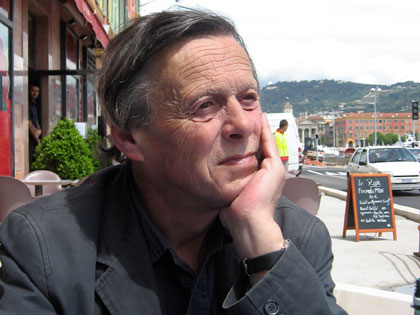By Paul Durcan. Harvill Secker, 16.99 sterling
Paul Durcan believes that hearing a poet reading his work aloud is crucial to appreciation of the poetry, and in his brief foreword to this volume he enlists the support of TS Eliot in asserting that “public reading is the life blood of the art of poetry.” The words on the page are not enough, Durcan insists – “the reader must hear the poet’s own recitation.”
There are a couple of problems with that credo, not least the fact that, as in the case of Eliot, many poets are terrible reciters of their own verse – pompous or mumbling or with a drone that would put audiences asleep. A more basic problem, though, was articulated by Philip Larkin when, in a 1982 Paris Review interview, he explained why he didn’t give public readings: “Hearing a poem, as opposed to reading it on the page, means you miss so much – the shape, the punctuation, the italics, even knowing how far you are from the end. ..And the speaker may interpose his own personality between you and the poem. When you write a poem, you put everything into it that’s needed: the reader should ‘hear’ it just as clearly as if you were in the room saying it to him.”
And he added that the “fashion for poetry readings has led to a kind of poetry that you can understand first go: easy rhythms, easy emotions, easy syntax. I don’t think it stands up on the page.”
Larkin, of course, was a very private man, whereas Durcan revels in public performance. Hence the subtitle of this self-chosen selection from his life’s work. And it must be said that his readings have been very successful in attracting unusually large audiences who are obviously enamoured of his declamatory style. In that sense he’s a genuinely popular poet and I suppose he should be commended for that, though using such criteria would also necessitate praise for Pam Ayres.
But how about the poems as presented on the page, which is how most people will encounter his work? Well, there’s much felicity here, and a good deal of wit and poignancy, too, along with an occasional and bracingly savage anger – most notably in those poems that courageously address atrocities committed down through the years in the name of a united Ireland (his 1999 sequence on Omagh is especially powerful).
The only trouble is that much of what he writes doesn’t seem to be poetry at all, or at least as some of us understand it. It’s not just that you’ll spend a long time searching through these 570 pages in search of a rhyme or even a recognisable iambic pentameter – that’s not essential, though it’s hard to imagine a poet not wishing to occasionally embrace the challenges and constraints of traditional forms.
And it’s not merely that there are few single lines here that will be remembered for their intrinsic lyrical or melodic beauty, though that might seem a requirement in poetry intended to survive the test of time. More dismayingly, it’s that the line breaks in many of the poems seem so arbitrary that you could retype whole swathes of them into prose paragraphs without losing any of their impact – or, indeed, without the reader being confident, or even aware, of where the breaks had originally been.
This, finally, is what diminishes the overall achievement, though in the fervour of a public performance such footling matters would probably go unnoticed.
